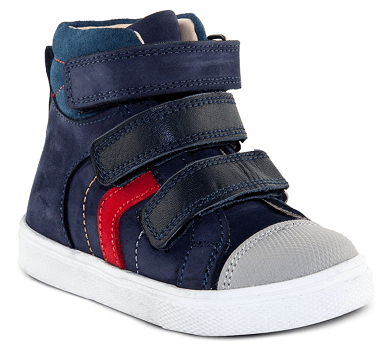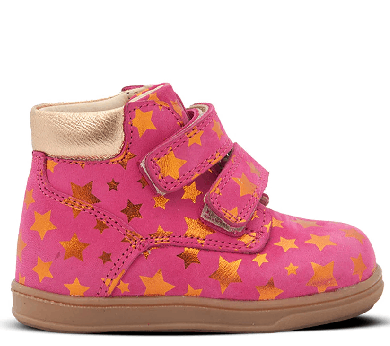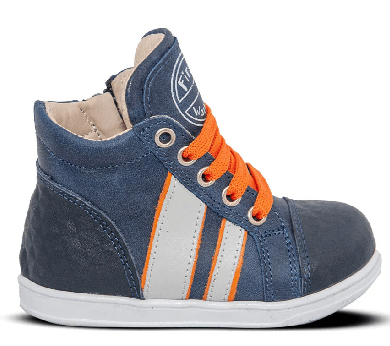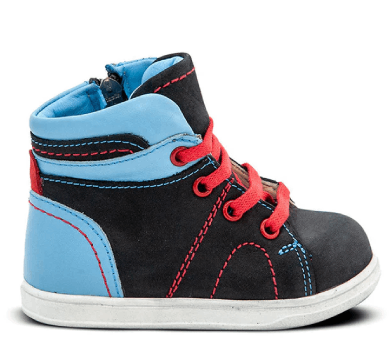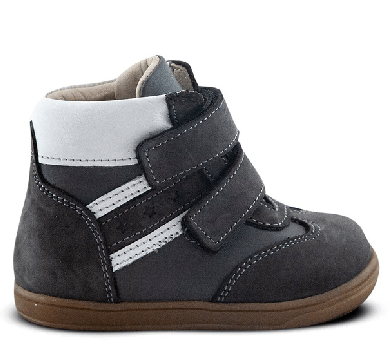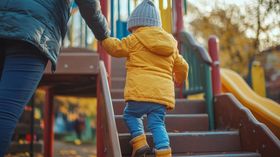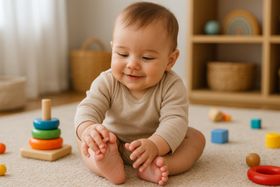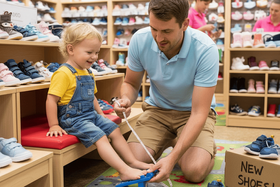Spina Bifida Occulta in Children: Symptoms, Diagnosis, and Outlook
A spine's subtle variation, a child's potential future. Learn more about the often-overlooked reality of Spina Bifida Occulta.
Updated August 7, 2025
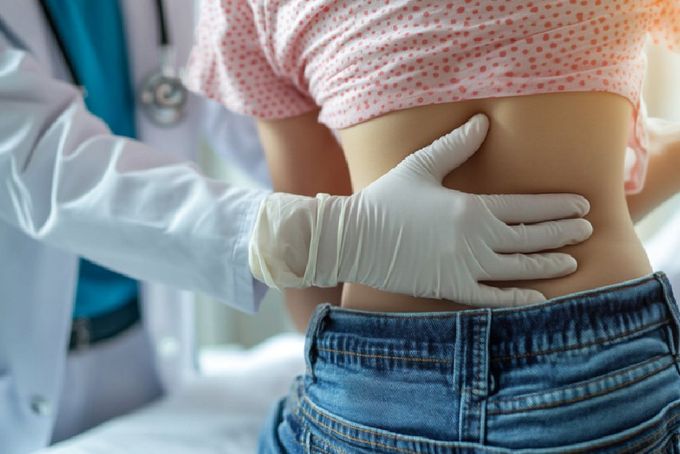
Spina bifida occulta (SBO) is a mild but often overlooked condition due to its "hidden" nature. While usually asymptomatic, some children develop back pain, leg weakness, or bladder and bowel issues during growth spurts. Without visible signs, parents may remain unaware until complications arise.
Because symptoms often appear later in childhood, diagnosis is frequently delayed, leaving families uncertain and unprepared.
Early awareness is key. Parents who notice subtle signs (like a dimple or patch of hair on the lower back) can seek medical advice in time. With advanced imaging and minimally invasive treatments, children can stay healthy and active.
» Get orthopedic shoes to help with foot conditions resulting from SBO
What is Spina Bifida Occulta (SBO)?
SBO, also known as hidden spina bifida, is a mild form of spina bifida, a common neural tube defect (NTD) [1]. It happens when one or more vertebral bones are incomplete, creating a gap in the spine.
But, the spinal cord remains normal, and the condition typically doesn't cause any neurological issues.
There are also two more versions of this condition, both more severe:
Spina Bifida Meningocele
A more severe version of this condition is spina bifida meningocele, also known as a fluid-filled sac.
It happens when a sac containing the meninges and cerebrospinal fluid protrudes through an opening in the spine while the spinal cord stays within the spinal canal. Although doctors can surgically correct it, it may still lead to certain disabilities.
Spina Bifida Myelomeningocele
Finally, a spina bifida myelomeningocele is the most severe form of spina bifida. In this condition, part of the spinal cord and the meninges protrude through an opening in the spine, forming a sac on the baby's back.
This type can cause serious disabilities, including impaired movement, loss of bowel and bladder control, and sometimes even hydrocephalus.
Here's a quick summary of the differences between the three conditions:
| Feature | Spina Bifida Occulta | Meningocele | Myelomeningocele |
|---|---|---|---|
| Severity | Mild | Moderate | Severe |
| Spinal Cord Involvement | Spinal cord remains normal | Spinal cord remains within the canal | Spinal cord is exposed outside of the spine |
| Visible Sac | No visible sac or portrusion | Sac contains meninges and cerebrospinal fluid | Sac contains the spinal cord, meninges, and cerebrospinal fluid |
| Neurological Impact | Usually no neurological issues | May cause no disabilities | Often leads to significant disabilities like paralysis or bowel dysfunction |
| Treatment and Prognosis | Usually requires non treatment | Can be surgically corrected with minimal complications | Needs surgical intervention but may result in disabilities. |
| Appearance on Baby's Back | Often no visible signs, but may have a small dimple, birthmark of tuft of hair | A fluid-filled sac covered by skin is visible | A large sac, often with exposed nerves. |
» Explore key infant developmental milestones of kids
How Common Is Spina Bifida Occulta in Children?
The prevalence of SBO varies across studies and populations. One study states that it occurs in approximately 12% of the general population [2]. Another one reported a prevalence rate ranging from 1.87 to 8.9 per 1,000 live births, depending on the population studied [3].
» Find out if your kid should wear shoes while learning to walk
4 Symptoms Of Spina Bifida Occulta in Children
1. Back Pain and Discomfort
Back pain in children with SBO is often subtle and happens on and off. Younger kids may have:
- Increased fussiness
- Unwillingness to engage in physical activities
- Complaints of aching, particularly when sitting for extended periods.
In older children and adolescents, pain is more localized to the lower back and may worsen with physical exertion or prolonged standing [4].
2. Neurological Issues
Neurological symptoms in SBO are uncommon but can vary across developmental stages.
Infants and toddlers may show subtle signs such as:
- Mild muscle weakness
- Reduced lower limb reflexes
- Slight coordination difficulties
School-aged children might have:
- Occasional leg numbness
- Minor troubles with walking
- Balance issues
Adolescents—especially those with tethered cord syndrome—could have more noticeable symptoms like [5]:
- Intermittent tingling
- Mild muscle weakness
- Decreased sensation in specific lower body regions
SEE ALSO: What are the common causes of toe walking in kids
3. Skin Dimples
If your kid has spina bifida occulta, you might notice dimples or skin depressions at the base of their spine. You can usually find them in the midline of the lower back, just above the buttock cleft.
While they don't immediately mean that your kid has spina bifida occulta, these dimples happen in around 20-25% of cases. They suggest an underlying vertebral issue and require a professional medical evaluation.
4. Localized Hair Patches or Skin Pigmentation
In mild to moderate spina bifida occulta cases, you might see abnormal hair growth or skin discoloration near the spine. It could be anything from small, concentrated hair patches, to subtle skin color changes and localized pigmentation.
Again, such symptoms don't immediately mean that your kid has spina bifida occulta, but a doctor should examine them using X-rays or MRI scans.
» Explore the connection between knock knees and height in kids
4 Consequences of Spina Bifida Occulta
1. Spinal Cord and Nervous System Deficits
SBO is the mildest and most common form of spina bifida. It's asymptomatic and discovered by chance during imaging studies. But, some kids with this condition may develop tethered cord syndrome (TCS) over time [6].
TCS is a neurological disorder that's caused by tissue attachments that limit the movement of the spinal cord inside the spinal column. This condition causes a child spinal cord to stretch as they grow, leading to neurological harm that gets worse over time.
TCS may cause:
- Leg weakness
- Trouble walking
- Foot deformities
- Bowel and bladder dysfunction
- Back or leg pain, particularly during childhood growth spurts
2. Posture and Gait Issues
SBO can affect a child's development as there's a gentle pull on the spinal cord, which may cause [7]:
- Scoliosis, i.e. abnormal curvature of the spine
- Unequal leg lengths
- Foot deformities
- Trouble walking
- Lower back pain
- Hip rotation
- Hamstring tightness
During growth spurts, these issues may become more pronounced as the tethered cord creates tension [8]. Still, many cases remain asymptomatic.
3. Troubles With Physical Activities
SBO may impact your kid while they play sports. For example, kids with SBO may have back pain that fluctuates in intensity, and can be made worse by physical strain [9]. Even daily activities like walking or standing might be hard for them if performed for longer periods.
To help them overcome these challenges, you can:
- Have them go to physical therapy that will target their core strength and flexibility [10].
- Get them orthopedic footwear to wear, along with orthotics.
- Monitor them during growth spurts
- Encourage them to play lower-impact sports when appropriate
4. Bladder or Bowel Dysfunction
SBO typically has a minimal risk for bowel or bladder dysfunction severe forms, but it can come with subtle complications like:
- Urinary retention
- Recurrent urinary tract infections (UTIs) [11]
- Constipation
- Loss of bladder control
To effectively monitor and manage these risks, you should take your kid to regular urological exams. Doctors may examine how your kid's bladder stores and releases urine, including how much is left after they go.
Look out for signs like trouble starting to pee, needing to go often, leaking, sudden urges, repeated bladder infections, or constipation. These could all be signs of a problem.
Therapy Approaches for Spina Bifida Occulta
Non-Invasive Treatments
- Physical Therapy: This treatment helps build strength in your little one's core and legs to improve their walking and keep their muscles flexible. It's best for kids with mild SBO, accompanied by muscle weakness or trouble walking.
- Orthotic Support: Custom-made braces can provide extra support and help your kid stand and move better. These devices help with foot problems and make walking easier. They also keep bones and muscles from deteriorating.
- Medication Management: Medicine is available to help control symptoms in children suffering from nerve pain or problems with bladder or bowel function. This includes medicine to help with bladder control, constipation, and nerve pain.
Invasive Treatments
- Detethering Surgery: This procedure loosens the spinal cord so it can move normally, releasing spinal cord attachments and preventing further deterioration.
- Spinal Fusion: When SBO causes the spine to become unstable or develop a progressive curve, a spinal fusion procedure might be necessary. It stabilizes the spine and prevents further curvature when spinal instability or worsening scoliosis is affecting movement.
- Urological Surgery: Children with very serious bladder problems might need surgery to increase bladder size or to create a channel for catheter use. This procedure improves bladder control and prevents kidney complications.
Benefits Of Supportive Footwear for Spina Bifida Occulta
Supportive footwear solutions like those offered by First Walkers offer several benefits for kids with SBO:
Enhanced Stability and Balance: Specially designed shoes provide a firm base, which helps with balance and reduces the risk of falling for people with muscle problems from SBO [12].
Prevention of Secondary Deformities: Using the right shoes helps the foot become flat, flexible, and able to work with braces—which is important for preventing foot problems in kids with spina bifida [13].
Improved Body Awareness: While we don't have conclusive studies on footwear's impact on body awareness in SBO, there is evidence that orthopedic shoes can help kids with mobility issues move better [14].
Pain Reduction: Supportive shoes can reduce pain by keeping your kid's feet in the right position and taking pressure off sore spots, making daily activities more comfortable for them.
How to Manage Spina Bifida Occulta
If your kid has asymptomatic or mild SBO, you can use several preventive strategies:
- Schedule check-ups to find subtle changes in nerve function early on. During these check-ups, doctors will asses their leg strength, the sensitivity of their legs, reflexes, and how well their bladder and bowels are working.
- Take care of your child's spine and avoid having them participate in activities that put too much stress on their lower back.
- By actively helping them manage bladder and bowel function, even before symptoms appear, you can help them prevent infections and constipation that could worsen the neurological symptoms.
- You can schedule physical therapy that focuses on strengthening your kid's core. This can help stabilize their spine and improve their movement control, giving their body extra resources to manage any minor problems.
Outlook and Care
Early detection of spina bifida occulta can significantly impact a child's health and well-being. By staying informed and vigilant for subtle signs, parents can take proactive steps toward timely diagnosis and treatment.
Selecting appropriate footwear is crucial for children with Spina Bifida Occulta, as it supports mobility and overall foot health. First Walkers offers a range of orthopedic shoes designed to provide the necessary support and comfort for children with specific needs.
References:
- A. D. Sandler, “Children with Spina Bifida: Key Clinical Issues,” Pediatric Clinics of North America, vol. 57, no. 4, pp. 879–892, Aug. 2010, doi: 10.1016/j.pcl.2010.07.009. Available: https://doi.org/10.1016/j.pcl.2010.07.009
- ISPN Guide, “Epidemiology of Spina bifida occulta and Tethered cord Syndrome in Children - ISPN guide,” ISPN Guide, Aug. 20, 2024. Available: https://ispn.guide/congenital-disorders-of-the-nervous-system-in-children/spina-bifida-occulta-and-tethered-cord-syndrome-in-children-homepage/epidemiology-of-spina-bifida-occulta-and-tethered-cord-syndrome-in-children/?utm_source
- A. Sahmat et al., “The prevalence and distribution of spina bifida in a single major referral center in Malaysia,” Frontiers in Pediatrics, vol. 5, Nov. 2017, doi: 10.3389/fped.2017.00237. Available: https://pmc.ncbi.nlm.nih.gov/articles/PMC5684468/
- W. Li et al., “Distribution and imaging characteristics of spina bifida occulta in young people with low back pain: a retrospective cross-sectional study,” Journal of Orthopaedic Surgery and Research, vol. 16, no. 1, Feb. 2021, doi: 10.1186/s13018-021-02285-w. Available: https://doi.org/10.1186/s13018-021-02285-w
- Y. M. Sakti, Z. A. Lanodiyu, G. P. Sakadewa, C. R. Cein, A. A. N. N. Baskara, and B. F. P. Rahayu, “Spina bifida occulta at the lumbar spine level manifested as chronic low back pain and unpredictable neurologic deficit: A case report,” International Journal of Surgery Case Reports, vol. 116, p. 109320, Feb. 2024, doi: 10.1016/j.ijscr.2024.109320. Available: https://pubmed.ncbi.nlm.nih.gov/38325108/
- “Tethered spinal cord Syndrome,” National Institute of Neurological Disorders and Stroke. Available: https://www.ninds.nih.gov/health-information/disorders/tethered-spinal-cord-syndrome?utm_source
- “Occult Spinal Dysraphism,” ScienceDirect. Available: https://www.sciencedirect.com/topics/pharmacology-toxicology-and-pharmaceutical-science/occult-spinal-dysraphism
- E. Tumber, “Understanding the relationship between spina bifida occulta and hip pain,” MedShun, May 21, 2024. Available: https://medshun.com/article/can-spina-bifida-occulta-cause-hip-pain?utm_source
- A. Mehta, “Understanding spina bifida occulta at S1 level,” PhysicsCore, Oct. 15, 2024. Available: https://physicscore.com/articles/understanding-spina-bifida-occulta-s1/?utm_source
- “Guide | Physical Therapy Guide to Spina Bifida,” Choose PT, May 29, 2021. Available: https://www.choosept.com/guide/physical-therapy-guide-spina-bifida?utm_source
- Spina Bifida Association, “Urology Guideline - Spina Bifida Association,” Spina Bifida Association, Jul. 14, 2023. Available: https://www.spinabifidaassociation.org/resource/urology/?utm_source
- B. Ivanyi, M. Schoenmakers, N. Van Veen, K. Maathuis, F. Nollet, and M. Nederhand, “The effects of orthoses, footwear, and walking aids on the walking ability of children and adolescents with spina bifida,” Prosthetics and Orthotics International, vol. 39, no. 6, pp. 437–443, Aug. 2014, doi: 10.1177/0309364614543550. Available: https://journals.lww.com/poijournal/Abstract/2015/39060/The_effects_of_orthoses%2C_footwear%2C_and_walking.1.aspx?utm_source
- V. T. Swaroop and L. Dias, “Orthopaedic management of spina bifida—part II: Foot and ankle deformities,” Journal of Children S Orthopaedics, vol. 5, no. 6, pp. 403–414, Sep. 2011, doi: 10.1007/s11832-011-0368-9. Available: https://doi.org/10.1007/s11832-011-0368-9
- M. Hill, A. Healy, and N. Chockalingam, “Effectiveness of therapeutic footwear for children: A systematic review,” Journal of Foot and Ankle Research, vol. 13, no. 1, Jan. 2020, doi: 10.1186/s13047-020-00390-3. Available: https://doi.org/10.1186/s13047-020-00390-3
Disclaimer: First Walkers' information is intended for educational and informational purposes related to toddler footwear and feet. We encourage you to consider individual circumstances and consult qualified orthopedists about specific conditions.

